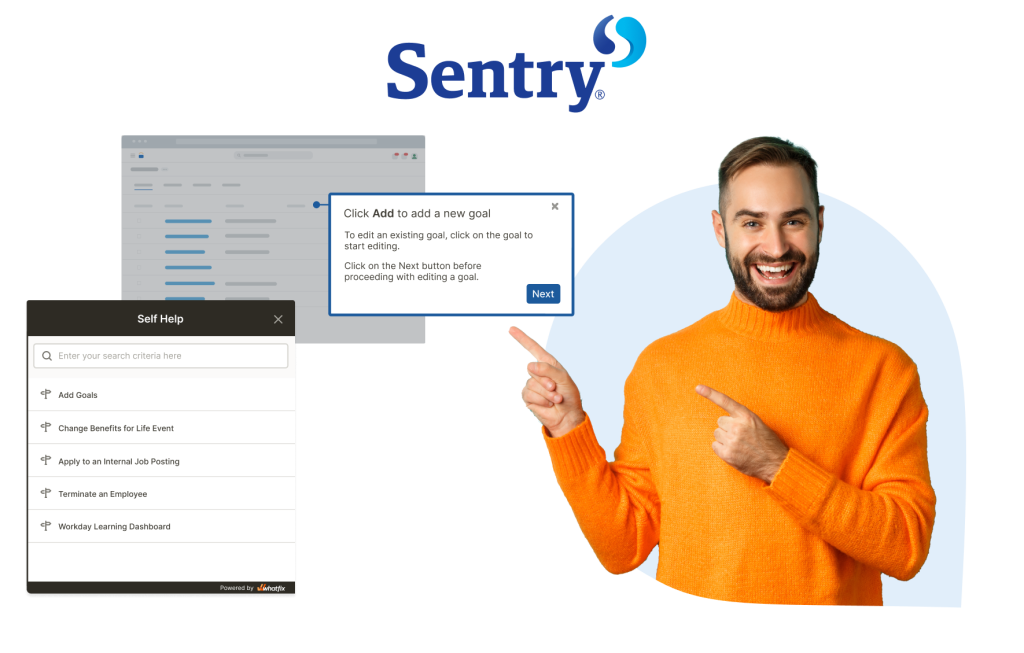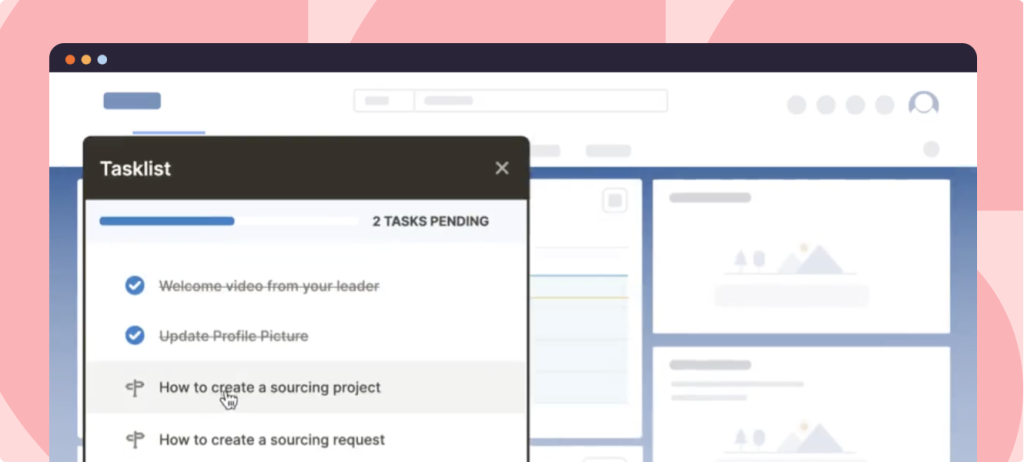A skilled and knowledgeable workforce is the foundation of any successful organization. As businesses evolve, enabling employees with the right training and support becomes essential for sustained growth and productivity. Well-designed training programs enhance individual performance while also strengthening overall organizational capabilities.
When thoughtfully crafted, an effective training program empowers employees to excel in their roles, adapt to new challenges, and contribute meaningfully to business objectives. This article explores the key steps to developing a training program that equips your team with the skills they need to succeed while maximizing the impact of your learning and development efforts.
What Are Employee Training Programs?
Employee training programs are structured initiatives within organizations aimed at enhancing employees’ knowledge, skills, and competencies. These programs allow employees to acquire new skills, gain knowledge, and improve their job performance. Training can cover various topics, from technical skills specific to job roles to soft skills like communication and leadership. The ultimate goal of team member training is to increase individual and collective proficiency, leading to higher productivity, improved job satisfaction, and better organizational performance.
How to Create an Effective Training Program in 8 Steps
Every training program will have contextual needs based on the intended outcome. However, al training programs can follow a blueprint to ensure success. Let’s dive deep into the process of creating an effective training program.
1. Assess organizational needs and training objectives
Start by thoroughly assessing organizational needs and defining clear training objectives. This ensures the training addresses real challenges, aligns with business goals, and delivers measurable results. Steps to assess needs include:
- Identifying organizational goals: Understand the company’s strategic objectives (e.g., improving customer satisfaction, increasing sales, or enhancing operational efficiency). Align training goals with these objectives to ensure the program supports overall business growth.
- Conduct a skills gap analysis: Compare employees’ current skill levels with the skills required to meet organizational goals. Use tools like performance reviews, manager feedback, and job analysis to identify gaps.
- Gather employee input: Conduct surveys, focus groups, or interviews to understand employees’ perspectives on their development needs.
- Analyze performance data: Review key performance indicators (KPIs), productivity reports, and error rates to identify areas where training can improve outcomes.
- Prioritize training needs: Not all skill gaps are equally urgent. Focus on areas that directly impact business performance, compliance, or safety.
2. Define clear training objectives
Set specific, measurable, achievable, relevant, and time-bound (SMART) objectives. Defining these parameters enables teams with contextual, value-based, obtainable training objectives for a specific time frame. This approach eliminates generalities by assigning a clear timeline, obvious outcomes, and success metrics that enable employees to grow in their roles. Defining SMART goals makes it easier for managers to track the progress of employee growth while tying these goals to business outcomes.
Example of a SMART goal: By the end of customer skills training, customer service representatives can handle customer complaints using a five-step resolution process, reducing the average complaint resolution time from 48 hours to 24 hours within the next 30 days.
3. Choose the right training methods
Consider your audience, budget, and desired outcomes. Here are some examples of effective training methods:
- Virtual Instructor-Led Training (VILT): Live online sessions where trainers deliver content in real-time, promoting interaction through discussions and Q&A.
- On the Job Training: On-the-job training is a hands-on training approach where employees acquire job-specific skills and knowledge by performing tasks in their actual work environment. Guided by mentors or supervisors, employees learn through real-world applications, observations, and practice.
- Sandbox Training: Sandbox training provides a safe, simulated sandbox environment where employees can practice new skills and processes without the risk of impacting live systems. This hands-on training approach boosts confidence, accelerates learning, and enables users to make mistakes and learn from them without real-world consequences.
- Learning in the Flow of Work: This method integrates training directly into employees’ daily tasks, allowing them to learn while working. By offering on-the-spot guidance and real-time solutions, it ensures the immediate application of knowledge, minimizes workflow disruptions and enhances productivity.
- Microlearning: Microlearning delivers short, focused learning modules that are easy to digest, typically lasting just a few minutes. These bite-sized lessons are ideal for just-in-time learning, helping employees quickly acquire specific skills or knowledge when needed most, without overwhelming them.
4. Leverage technology
Incorporating technology into training programs enhances engagement, personalizes learning experiences, and improves overall effectiveness. Two key innovations—adaptive learning technology and Artificial Intelligence (AI)—play crucial roles in modern employee development.
Adaptive learning technology customizes training to fit each employee’s unique needs, adjusting content and pacing based on their performance, knowledge gaps, and learning styles. This targeted approach ensures learners focus on areas requiring improvement, maximizing efficiency and reducing time spent on content they’ve mastered.
AI-powered solutions further enhance training by providing personalized content recommendations, automating assessments, and delivering real-time feedback to learners. AI-driven chatbots and virtual assistants offer instant answers to questions, while analytics tools monitor learner progress and suggest improvements, ensuring a continually optimized learning experience.
To effectively integrate these technologies, organizations should build a comprehensive employee training software stack with solutions that complement adaptive learning and AI capabilities:
- LMS (Learning Management System): Acts as the central hub for managing, delivering, and tracking training activities. An LMS can integrate with adaptive learning systems to assign courses based on employee needs, monitor progress, and generate detailed performance reports.
- eLearning Content Authoring Tools: These tools enable the creation of customized, interactive training content that supports adaptive learning. Features like multimedia integration, simulations, and branching scenarios make learning engaging and responsive to individual progress.
- DAP (Digital Adoption Platform): A DAP provides in-app guidance and real-time support, helping employees learn new software while working. Features like tooltips, task lists, and walkthroughs complement AI-driven personalization, ensuring employees receive contextual help when needed.
- Sandbox Environment: This offers a safe, hands-on training space where employees can practice skills, test processes, and explore systems without affecting live environments. When combined with adaptive learning, sandbox environments provide personalized practice scenarios, accelerating time to proficiency.
By leveraging adaptive learning, GenAI technologies, and a well-rounded L&D software stack, organizations can deliver personalized, on-demand training experiences that improve engagement, speed up skill acquisition, and drive long-term learning success.
5. Develop engaging training content
Creating engaging training content is essential for capturing learners’ attention, improving learning retention, and ensuring practical application. Here are several strategies to make your training content more engaging:
- Incorporate interactive elements: Use quizzes, simulations, and scenario-based activities to engage learners actively.
- Use multimedia and visuals: Add videos, animations, and infographics to enhance understanding and maintain attention.
- Break content into bite-sized modules: Deliver short, focused lessons (microlearning) for easy consumption and retention.
- Personalize the learning experience: Tailor content to individual roles and learning preferences for greater relevance.
- Gamification in training: Add points, badges, and leaderboards to motivate and make learning enjoyable.
6. Implement the training program effectively
To ensure successful execution, implement the training program in well-planned phases that accommodate the organization’s schedule and minimize disruption to daily operations. Start with a pilot session to gather feedback and make necessary adjustments before a full-scale rollout. Ensure logistical details—such as scheduling, resource allocation, venue (if in-person), or technical requirements (for virtual sessions)—are thoroughly planned.
Clear communication with participants is crucial; explain the training’s purpose, benefits, and how it will support their professional growth. Well-informed employees are more likely to be engaged and motivated to participate. Ongoing coordination and support throughout the implementation phase help ensure smooth delivery and maximize the program’s impact.
7. Foster continuous learning and training support
Learning shouldn’t stop after the initial training session; continuous development is essential for long-term success and improved job performance. Organizations must provide ongoing resources such as knowledge bases, online libraries, and discussion forums to help employees access information when needed.
Mentoring programs, peer learning, and regular refresher courses further reinforce skills and promote knowledge sharing. Scheduling follow-up sessions and check-ins ensures employees can ask questions, receive feedback, and apply what they’ve learned in their daily work.
Tools like Whatfix enable post-training support by providing in-app, on-demand guidance that integrates seamlessly into employees’ daily workflows. Its Self Help widget offers instant access to knowledge bases, tutorials, and AI-powered support, enabling users to find answers quickly. Task Lists and interactive walkthroughs guide employees through new processes or tools, ensuring consistent learning beyond initial training sessions.
8. Measure training effectiveness and optimize
Measuring training effectiveness is essential to ensure it delivers the intended results and supports continuous improvement. Using a combination of evaluation methods helps assess both immediate learning outcomes and long-term impacts on performance.
- Pre- and post-training assessments: Conduct knowledge checks or skills tests before and after training to measure learning gains. These assessments help quantify knowledge retention and skill development, allowing organizations to identify areas that may need additional focus.
- Feedback surveys: Collecting participants’ feedback immediately after training provides insights into content relevance, delivery quality, and overall satisfaction. Surveys can include questions about the clarity of information, trainer effectiveness, and suggestions for improvement, offering valuable data to refine future sessions.
- Performance metrics: Evaluate how training affects key business metrics, such as productivity, work quality, customer satisfaction, and error rates.
- On-the-job observations: Supervisors and managers can observe how well employees apply new skills in real-world scenarios, offering qualitative data on the training’s practical effectiveness. These observations help identify gaps between what was learned and how it’s implemented, guiding targeted follow-up training if needed.
Regularly analyzing this data allows organizations to optimize training content, methods, and delivery for continuous improvement.
Effective Employee Training Plan Template
Download your customizable copy of our employee training plan template.
Benefits of Implementing Effective Employee Training Programs
Here’s why it is worth investing in effective employee training programs.
- Improved employee performance: Training equips employees with the necessary skills and knowledge, leading to higher productivity, better quality of work, and increased confidence in their roles.
- Increased employee engagement and retention: Offering development opportunities shows employees they are valued, boosting morale, job satisfaction, and reducing turnover rates.
- Faster onboarding and time-to-productivity: Effective training accelerates the onboarding process, enabling new hires to become productive members of the team more quickly.
- Reduced errors and compliance risks: Well-trained employees make fewer mistakes and are better equipped to follow industry regulations, minimizing legal and operational risks.
- Stronger leadership pipeline: Training programs help identify and develop future leaders, ensuring the organization has a steady stream of capable individuals ready to step into key roles.
- Boosted organizational competitiveness: Continuous learning keeps employees up-to-date with industry trends and innovations, giving the organization a competitive edge.
- Cost savings in the long term: Investing in training reduces turnover, errors, and inefficiencies, leading to significant long-term savings for the organization.
Challenges to Creating a Successful Training Program
Here are some challenges L&D teams might face while implementing training programs within the organization.
- Identifying the right training needs: Determining the actual skill gaps and aligning training with business goals can be challenging without thorough assessments and feedback from stakeholders.
- Ensuring learner engagement: Keeping employees motivated and actively involved in training requires interactive content, relevant training material, and varied learning methods.
- Balancing time and productivity: Finding the right balance between training time and maintaining productivity can be difficult, especially in fast-paced work environments.
- Measuring training effectiveness: Evaluating how well the training translates into improved performance and business outcomes requires effective metrics and continuous follow-up.
- Keeping content relevant and up-to-date: Rapid changes in technology and industry standards make it challenging to keep training materials current and aligned with evolving needs.
Examples of Effective Employee Training Programs
Effective employee training programs are implemented by many organizations to enhance skills, improve performance, and drive success. Here are some real-life examples:
1. Google’s “Googleplex” University
Google is known for its innovative approach to employee development. The company offers a wide range of training programs, including “Googleplex University,” which provides courses on various subjects, from leadership to coding. Google encourages its employees to spend 20% of their work time on personal projects, which often involve learning and skill development.
2. Sentry Insurance
Sentry Insurance transformed its training approach by integrating Whatfix Digital Adoption Platform across eight critical applications, including their Human Capital Management (HCM) system, customer administration, policy and claims management apps, and customer portals. This integration enabled the creation of personalized, in-app learning experiences and tutorials, significantly enhancing user onboarding and support. As a result, Sentry reduced training content creation time by 40%, decreased daily support tickets by 100, and achieved savings of approximately $950,000 in content creation, user support, application adoption, and productivity.

3. Cooley
Cooley, a global law firm, runs a virtual mentoring program called Cooley Academy Mentoring Program (CAMP). The program is geared towards improving the firm’s onboarding process. The purpose is to pair new employees with experienced individuals and bring them up to speed more quickly and efficiently.
Through this program, mentors get to teach, train, and support new hires through mentoring sessions and prepare them for their job roles. The company uses reporting tools to better understand how mentoring relationships are performing through mentorship progress and feedback.
4. IBM’s “Think Academy”
IBM’s “Think Academy” offers a vast array of training and development programs for its employees. These programs cover technical skills, leadership, and innovation. IBM recognizes that the rapidly changing technology landscape requires continuous learning and skill development to remain competitive.
5. Amazon
Amazon runs multiple training programs under the Amazon Technical Academy to prepare nontechnical employees to move into software engineering careers. These training programs help employees feel confident and take on different roles. One such program is Associate2Tech, where front-line employees are trained to move into technical roles, even if they have no previous IT experience. All training programs are voluntary.
6. REG
Renewable Energy Group (REG) transformed its employee training by integrating Whatfix Digital Adoption Platform into its critical applications, including JD Edwards and Salesforce. This integration provided in-application guidance, offering employees contextual, step-by-step assistance directly within the software. As a result, REG standardized its training approach, significantly reducing time-to-proficiency by approximately 50% and decreasing daily IT support queries by 83%. This seamless, hands-on learning experience empowered employees to become proficient more quickly and efficiently.
Training Clicks Better With Whatfix
Creating an effective employee training program is essential for improving performance, enhancing engagement, and driving long-term organizational success. While traditional training methods lay the foundation, leveraging advanced tools like Whatfix ensures that learning is not only effective but also continuous and accessible.
The Whatfix Digital Adoption Platform provides in-app guidance that supports employees in the flow of work. Task Lists and tours simplify onboarding and tool adoption, while Flows offer step-by-step instructions for complex or rare tasks, reducing errors. The Self Help widget grants on-demand access to knowledge bases and AI assistance, enabling quick answers without workflow disruption. Guidance Analytics and surveys further enhance training by tracking usage and collecting valuable feedback.
Complementing this, Whatfix Mirror provides a sandbox environment that enables employees to engage in hands-on training in a realistic, interactive, and risk-free setting. By allowing users to practice tasks in a controlled environment, it significantly accelerates time-to-proficiency and boosts learner confidence without impacting live systems.
With Whatfix, training becomes an ongoing, integrated experience—empowering employees to learn, perform, and grow seamlessly within their daily tasks. To learn more about Whatfix, schedule a free demo with us today!







